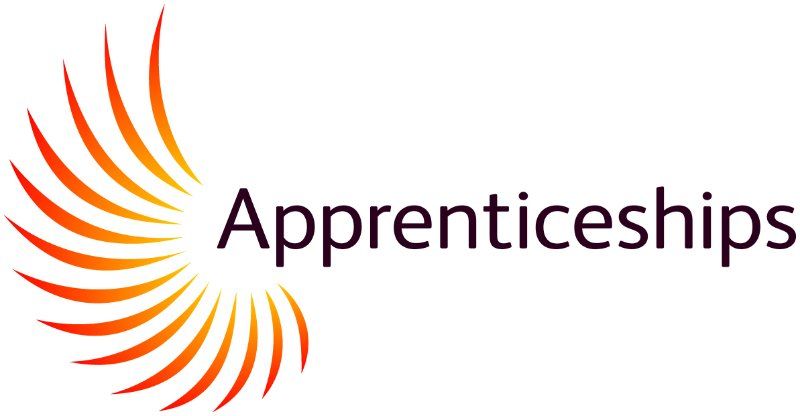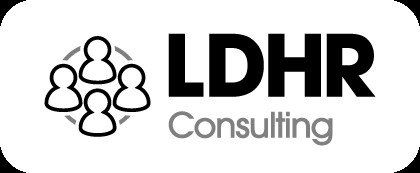Could coaching benefit your business?
- By Lorraine Dyer
- •
- 11 Jul, 2018
- •

What is coaching?
Coaching is a development technique based on the use of one-to-one discussions to enhance an individual’s skills, knowledge or work performance.
Coaching targets high performance and improvement at work and usually focuses on specific skills and goals, although it may also have an impact on an individual’s personal attributes (such as social interaction or confidence).
Coaching typically lasts for a relatively short defined period of time, or forms the basis of an on-going management style.
• It is essentially a non-directive form of development, though this is not a hard and fast rule
• It focuses on improving performance and developing individuals’ skills
• Personal issues may be discussed but the emphasis is on performance at work
• Coaching activities have both organisational and individual goals
• It provides people with feedback on both their strengths and their weaknesses
• It is a skilled activity, which should be delivered by people who are trained to do so. However, this can be line managers and others trained in basic coaching skills
Coaching has in recent years become an increasingly popular tool for supporting employee development and it is clear from research that the technique is very much here to stay. The 2014 CIPD Learning and development survey report finds that 76% of organisations offer coaching, with an additional 12% planning to offer it in the next year.
Who delivers the coaching?
Coaching services may delivered by external coaches or by full or part-time internal coaches who may be line managers or members of the HR department.
The findings from the CIPD Learning and development survey show that line managers are most likely to take the main responsibility for delivering coaching, followed by other internal coaches. Coaching is less frequently delivered by external coaches although proportions using external practitioners are higher among smaller companies.
What are the benefits of coaching?
• Cost effective development tool that can be delivered on a daily / ongoing basis
• Coached employees can develop skills to coach other people within the business
• Supports development of individual’s either in their current role, or for future roles within the business (supports succession planning)
• Employees can feel motivated and engaged so has a positive impact on retention, motivation and performance
• Can focus on the achievement of business goals, so impact on overall business performance
For more information on how Coaching can benefit your business, get in touch!
Coaching is a development technique based on the use of one-to-one discussions to enhance an individual’s skills, knowledge or work performance.
Coaching targets high performance and improvement at work and usually focuses on specific skills and goals, although it may also have an impact on an individual’s personal attributes (such as social interaction or confidence).
Coaching typically lasts for a relatively short defined period of time, or forms the basis of an on-going management style.
• It is essentially a non-directive form of development, though this is not a hard and fast rule
• It focuses on improving performance and developing individuals’ skills
• Personal issues may be discussed but the emphasis is on performance at work
• Coaching activities have both organisational and individual goals
• It provides people with feedback on both their strengths and their weaknesses
• It is a skilled activity, which should be delivered by people who are trained to do so. However, this can be line managers and others trained in basic coaching skills
Coaching has in recent years become an increasingly popular tool for supporting employee development and it is clear from research that the technique is very much here to stay. The 2014 CIPD Learning and development survey report finds that 76% of organisations offer coaching, with an additional 12% planning to offer it in the next year.
Who delivers the coaching?
Coaching services may delivered by external coaches or by full or part-time internal coaches who may be line managers or members of the HR department.
The findings from the CIPD Learning and development survey show that line managers are most likely to take the main responsibility for delivering coaching, followed by other internal coaches. Coaching is less frequently delivered by external coaches although proportions using external practitioners are higher among smaller companies.
What are the benefits of coaching?
• Cost effective development tool that can be delivered on a daily / ongoing basis
• Coached employees can develop skills to coach other people within the business
• Supports development of individual’s either in their current role, or for future roles within the business (supports succession planning)
• Employees can feel motivated and engaged so has a positive impact on retention, motivation and performance
• Can focus on the achievement of business goals, so impact on overall business performance
For more information on how Coaching can benefit your business, get in touch!

You may be feeling unclear about how the referendum vote for Britain to leave the EU affects the recruitment and current employment of workers from EU countries. Here are some of your questions answered:
What does Brexit mean for workers from other EU countries ?
The referendum result changes nothing right now, as Britain remains in the EU until the Brexit deal has been negotiated by the UK government. This could be more than two years away. Workers from other EU countries have the same rights as they had before the result.
Can I continue to employ workers from other EU countries?
Yes. It is still unlawful to treat EU workers any differently from workers born in the UK.
Workers who believe they have been discriminated against for reasons of nationality or national origin can still make a claim under the Equality Act 2010.
Can I still recruit workers who are from the EU?
Yes. Again, it is still unlawful to discriminate against or in favour of workers from other EU countries.
Job applicants who believe they have been unfairly turned down for a job due to their nationality or national origin can still make a claim.
Are there any additional documents required if I employ workers from the EU?
No. All workers must continue to provide the same identity and 'right to work' checks, whether an EU or British worker. .
You can be sent to jail for up to 5 years and receive an unlimited fine if you know or should have known that you employed someone who doesn’t have the right to work in the UK. Please get in touch if you have any questions about what documentation is required for ‘Right to Work.’
What will happen once Britain does exit the EU?
Longer term, the rights of workers from the EU will depend on the Brexit deal negotiated. The deal is likely to include detailed provisions about the future status of workers from the EU.
If you have any questions about the referendum result affects the recruitment and employment of EU workers get in touch! Email:lorraine@ldhrconsulting.com
What does Brexit mean for workers from other EU countries ?
The referendum result changes nothing right now, as Britain remains in the EU until the Brexit deal has been negotiated by the UK government. This could be more than two years away. Workers from other EU countries have the same rights as they had before the result.
Can I continue to employ workers from other EU countries?
Yes. It is still unlawful to treat EU workers any differently from workers born in the UK.
Workers who believe they have been discriminated against for reasons of nationality or national origin can still make a claim under the Equality Act 2010.
Can I still recruit workers who are from the EU?
Yes. Again, it is still unlawful to discriminate against or in favour of workers from other EU countries.
Job applicants who believe they have been unfairly turned down for a job due to their nationality or national origin can still make a claim.
Are there any additional documents required if I employ workers from the EU?
No. All workers must continue to provide the same identity and 'right to work' checks, whether an EU or British worker. .
You can be sent to jail for up to 5 years and receive an unlimited fine if you know or should have known that you employed someone who doesn’t have the right to work in the UK. Please get in touch if you have any questions about what documentation is required for ‘Right to Work.’
What will happen once Britain does exit the EU?
Longer term, the rights of workers from the EU will depend on the Brexit deal negotiated. The deal is likely to include detailed provisions about the future status of workers from the EU.
If you have any questions about the referendum result affects the recruitment and employment of EU workers get in touch! Email:lorraine@ldhrconsulting.com

All employees have had the legal right to request flexible working since 2014. Research has shown than 76% of employers in the UK offer at least one type of flexible working, but according to Timewise*, only 6.2% of jobs are advertised as flexible.
What does flexible working mean?
Flexible working is part time, working remotely (i.e. from home), job sharing and working irregular or compressed hours.
54% of workers report that they work flexibly, but this is limited to mostly part time workers, as just 5% say they are either job sharing, working compressed hours or term-time only.
What are the benefits of working flexibly to Employers?
Some of the benefits for employees are: achieving a better work-life balance; the ability to work while raising children or having other care responsibilities; work around commuting; an aging workforce can work flexibly and work for longer.
There are also considerable benefits for employers:
• 65% of employees who work flexibly are satisfied with their work-life balance, compared to just 47% of employees who don’t work flexibly. This has an impact on motivation and commitment in the work place
• High performing employees are retained by the opportunity to work flexibly (we know employee retention increases customer service and reduces recruitment and training costs for the business)
• Advertising that you recruit for flexible working attracts a more diverse workforce and new talent into your business. This is also positive for employer and business branding
• A flexible workforce meets the changing needs of our 24/7 society. Therefore flexible working meets the demands of your customers
• Flexible working can bring flexible payroll costs, which can support your business during seasonal or low/high demand
Have you considered advertising and recruiting flexibly for your next vacancy?
To find out more about flexible recruiting, get in touch!
- * Source CIPD June 2016
What does flexible working mean?
Flexible working is part time, working remotely (i.e. from home), job sharing and working irregular or compressed hours.
54% of workers report that they work flexibly, but this is limited to mostly part time workers, as just 5% say they are either job sharing, working compressed hours or term-time only.
What are the benefits of working flexibly to Employers?
Some of the benefits for employees are: achieving a better work-life balance; the ability to work while raising children or having other care responsibilities; work around commuting; an aging workforce can work flexibly and work for longer.
There are also considerable benefits for employers:
• 65% of employees who work flexibly are satisfied with their work-life balance, compared to just 47% of employees who don’t work flexibly. This has an impact on motivation and commitment in the work place
• High performing employees are retained by the opportunity to work flexibly (we know employee retention increases customer service and reduces recruitment and training costs for the business)
• Advertising that you recruit for flexible working attracts a more diverse workforce and new talent into your business. This is also positive for employer and business branding
• A flexible workforce meets the changing needs of our 24/7 society. Therefore flexible working meets the demands of your customers
• Flexible working can bring flexible payroll costs, which can support your business during seasonal or low/high demand
Have you considered advertising and recruiting flexibly for your next vacancy?
To find out more about flexible recruiting, get in touch!
- * Source CIPD June 2016

The Government has set a target to see 3 million apprentices by 2020. To achieve this George Osbourne has confirmed the introduction of a fundamental change to the way Apprenticeships in England are funded, by the introduction of an Apprenticeship Levy, from April 2017.
The basic charge is 0.5% of your PAYE bill. However, companies can claim £15,000 training allowance to offset this, which means that Employers with an annual pay bill of over £3m, will pay the levy.
The levy payment will then be ring-fenced in the form of an electronic voucher that can be used to purchase apprenticeship training.
The levy is the government’s logical solution to funding the increase in numbers and committing employers to take on apprentices.
Example Company 1. Employs 100 people, each earning £20,000
Wage cost: 100 x £20,000 = £2,000, 000
Levy: 0.5% of £2,000,000 = £10,000
Allowance: £10,000 - £15,000 allowance - £0 annual Levy payment
Example Company 2. Employs 200 people, each earning £20,000
Wage cost: 200 x £20,000 = £4,000, 000
Levy: 0.5% of £4,000,000 = £20,000
Allowance: £20,000 - £15,000 allowance - £5,000 annual Levy payment
If you would like support on employing Apprentices for your business, get in touch!
The basic charge is 0.5% of your PAYE bill. However, companies can claim £15,000 training allowance to offset this, which means that Employers with an annual pay bill of over £3m, will pay the levy.
The levy payment will then be ring-fenced in the form of an electronic voucher that can be used to purchase apprenticeship training.
The levy is the government’s logical solution to funding the increase in numbers and committing employers to take on apprentices.
Example Company 1. Employs 100 people, each earning £20,000
Wage cost: 100 x £20,000 = £2,000, 000
Levy: 0.5% of £2,000,000 = £10,000
Allowance: £10,000 - £15,000 allowance - £0 annual Levy payment
Example Company 2. Employs 200 people, each earning £20,000
Wage cost: 200 x £20,000 = £4,000, 000
Levy: 0.5% of £4,000,000 = £20,000
Allowance: £20,000 - £15,000 allowance - £5,000 annual Levy payment
If you would like support on employing Apprentices for your business, get in touch!

From 1st April 2016 the National Living Wage was introduced, which means that all workers aged 25 and over have to be paid a minimum of £7.20 per hour by law (this is set to rise to £9 per hour by 2020). The reason for the National Living Wage introduction is to support the government’s vision of a higher wage, lower welfare, and lower tax society.
The National Minimum Wage will continue to apply for workers aged below 25, currently £6.70 for those aged 21 to 24, £5.30 for those aged 18 to 20 and £3.87 for under 18’s.
How this has affected the hospitality industry?
• Welcome Break, the Motorway service operator have announced that they will pay the National Living Wage to all workers, irrespective of age. This will ensure they continue to attract young talent to the Company.
• A detailed analysis by the Resolution Foundation Think-Tank believes that rises are affordable for the UK Plc, but acknowledges that 46% of all those affected (2.7 million people) work in wholesale, retail and hospitality.
• Premier Inn owner Whitbread have said they have “developed plans” to deal with the new National Living Wage and would mitigate the “substantial cost increase” through productivity improvements, efficiency savings and “some selective price increases.”
• A number of hospitality companies, including JD Weatherspoon, have raised concerns that the compulsory wage increase will lead to higher costs and result in more pubs and restaurant closures, ultimately having a negative effect on the hospitality industry and wider economy.
• Deutsche Bank has warned that “the National Living Wage will place significant pressure on companies in the hospitality industry space and would stunt potential growth for a few years.”
What have some hospitality clients told me?
“Our payroll budgets will not be increased, we need to absorb the costs into the current budget” Hotel GM, South
“We will be reviewing pay at all levels in the business to ensure a differential remains between general roles and Supervisory and management positions” Hotel GM, North West
“We also need to consider the impact on pension contributions, following the introduction of the work place pension” Restaurant GM, South East
“We plan to increase the standard wage across the hotel for all employees, regardless of age. Our minimum wage for all employees has always been the same” Hotel Owner, Midlands
Thank you to all clients who have contributed. I would be interested in hearing more views and views from other industries on the effect of the National Living Wage.
The National Minimum Wage will continue to apply for workers aged below 25, currently £6.70 for those aged 21 to 24, £5.30 for those aged 18 to 20 and £3.87 for under 18’s.
How this has affected the hospitality industry?
• Welcome Break, the Motorway service operator have announced that they will pay the National Living Wage to all workers, irrespective of age. This will ensure they continue to attract young talent to the Company.
• A detailed analysis by the Resolution Foundation Think-Tank believes that rises are affordable for the UK Plc, but acknowledges that 46% of all those affected (2.7 million people) work in wholesale, retail and hospitality.
• Premier Inn owner Whitbread have said they have “developed plans” to deal with the new National Living Wage and would mitigate the “substantial cost increase” through productivity improvements, efficiency savings and “some selective price increases.”
• A number of hospitality companies, including JD Weatherspoon, have raised concerns that the compulsory wage increase will lead to higher costs and result in more pubs and restaurant closures, ultimately having a negative effect on the hospitality industry and wider economy.
• Deutsche Bank has warned that “the National Living Wage will place significant pressure on companies in the hospitality industry space and would stunt potential growth for a few years.”
What have some hospitality clients told me?
“Our payroll budgets will not be increased, we need to absorb the costs into the current budget” Hotel GM, South
“We will be reviewing pay at all levels in the business to ensure a differential remains between general roles and Supervisory and management positions” Hotel GM, North West
“We also need to consider the impact on pension contributions, following the introduction of the work place pension” Restaurant GM, South East
“We plan to increase the standard wage across the hotel for all employees, regardless of age. Our minimum wage for all employees has always been the same” Hotel Owner, Midlands
Thank you to all clients who have contributed. I would be interested in hearing more views and views from other industries on the effect of the National Living Wage.

What is PRISM Brain Mapping?
PRISM Brain Mapping is a sophisticated, online, neuroscience-based instrument specifically designed to identify the behavioural preferences that directly relate to personal relationships and work performance.
PRISM provides three distinct profiles, or ‘maps’, of a person’s behaviour: how he or she naturally prefers to behave; the extent to which he or she feels it necessary to modify that behaviour on occasions to achieve key objectives, and the overall pattern of behaviour that he or she tends to use for most of the time.
In addition to the eight behaviour dimension maps, PRISM generates up to a 60-page personalised report which identifies and measures 26 key aspects of work preference.
PRISM also provides an analysis of a person’s Emotional Intelligence (EQ) preferences and a summary of his or her ‘big five’ personality traits, one of the most widely accepted and used models of personality.
How can PRISM be used in Recruitment?
In recruitment, PRISM can benchmark the requirements of a job in terms of suitability, work aptitude and organisational culture. PRISM matches each candidate with a 22 factor benchmark for performance excellence for a role.
It can then screen candidates and identify and rank those who ‘best fit’ that role or vacancy in terms of behavioural suitability.
A trained PRISM Practitioner can email questionnaire links to a candidate and then manage the output report content.
What are other uses of PRISM?
Uses of PRISM include:
• Coaching
• General Personal Development and Improving Leadership Skills
• Diagnosing Team Performance
• 360 Degree Feedback Tool (to include generic or in-house competencies)
To find out more about how PRISM can be used to support your recruitment process email: lorraine@ldhrconsulting.com
PRISM Brain Mapping is a sophisticated, online, neuroscience-based instrument specifically designed to identify the behavioural preferences that directly relate to personal relationships and work performance.
PRISM provides three distinct profiles, or ‘maps’, of a person’s behaviour: how he or she naturally prefers to behave; the extent to which he or she feels it necessary to modify that behaviour on occasions to achieve key objectives, and the overall pattern of behaviour that he or she tends to use for most of the time.
In addition to the eight behaviour dimension maps, PRISM generates up to a 60-page personalised report which identifies and measures 26 key aspects of work preference.
PRISM also provides an analysis of a person’s Emotional Intelligence (EQ) preferences and a summary of his or her ‘big five’ personality traits, one of the most widely accepted and used models of personality.
How can PRISM be used in Recruitment?
In recruitment, PRISM can benchmark the requirements of a job in terms of suitability, work aptitude and organisational culture. PRISM matches each candidate with a 22 factor benchmark for performance excellence for a role.
It can then screen candidates and identify and rank those who ‘best fit’ that role or vacancy in terms of behavioural suitability.
A trained PRISM Practitioner can email questionnaire links to a candidate and then manage the output report content.
What are other uses of PRISM?
Uses of PRISM include:
• Coaching
• General Personal Development and Improving Leadership Skills
• Diagnosing Team Performance
• 360 Degree Feedback Tool (to include generic or in-house competencies)
To find out more about how PRISM can be used to support your recruitment process email: lorraine@ldhrconsulting.com
